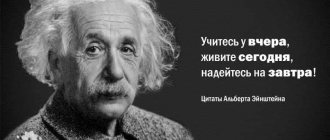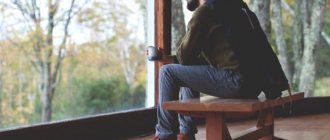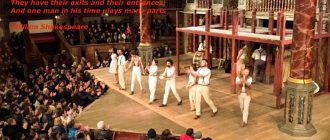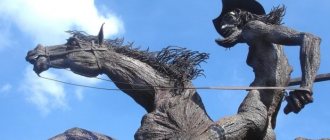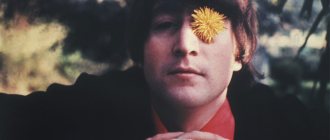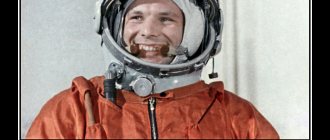In childhood, many people dream of becoming an astronaut, of course, because it seems to children that nothing is impossible, and they are full of enthusiasm to explore new spaces. Despite the fact that dreams of flying into space dissolve with age, there are those who still decide to conquer outer space and develop space science. On the eve of Cosmonautics Day, we offer you a selection of quotes and sayings by astronauts and philosophers about space.
Cosmonautics began to actively develop in the second half of the last century. The first cosmonauts were the dogs Belka and Strelka, who flew in 1960. Their journey lasted more than 25 hours. The dogs were carefully selected; for their flight, the arrangement of the rocket was thought out to the smallest detail; the designers, led by S. Korolev, did everything possible to ensure that the dog pilots returned from space safe and sound. The first person to fly into outer space was Yuri Gagarin, who flew into space on April 12, 1961. And the first female cosmonaut was Valentina Tereshkova.
Quotes and sayings
Astronautics has a limitless future, and its prospects are limitless, like the Universe itself. (Sergey Korolev)
Since so many children dream of becoming astronauts in childhood, it means that astronautics really does have a future. The main thing is that children don’t stop dreaming...)
Nothing is lost in space. (Stanislav Lem)
There is simply nothing to take from there, that’s why it doesn’t disappear)
The cosmos is inside us, we are made of stellar matter, we are the way the cosmos knows itself. (Carl Sagan)
The inner world of every person is the cosmos.
There are no seasons in space: no winter and summer, no spring and autumn. There is no specific evening or morning here, but only space and nothing more. (Ray Bradbury)
Moreover, there is no poverty and wealth in space...
Space is not that far away at all. It's only an hour's drive away, provided your car is capable of going straight up. (Fred Hoyle)
Indeed, it’s not that far, especially considering that cars drive vertically...))
There will be no cosmic dialogue. In space, only monologues are possible. (Stanislav Lem)
And then internal...
Space is space. There is nothing like it on Earth. (Gennady Padalka)
Everyone loves to describe space, but no one knows what it is...)))
Space is not a walk, a rocket is not an airplane. (Yuri Gagarin)
Space is a test of one's own masculinity.
Fly into space, then you will find out for yourself where it is more difficult. (Yuri Gagarin)
Don’t complain about life on Earth, you simply haven’t seen another.
Life shows that space will be explored not by some supermen, but by the simplest people. (Yuri Gagarin)
Everything is brilliant, simple as always.
Statuses
When we fully explore space, it turns out that while we were here on earth, we were already in the sky.
First you need to understand your inner world, and then explore space...)
We will be the fleas of space, jumping from star to star.
I agree about the fleas, but what do the stars have to do with it?!))
This cosmos, one and the same for everything that exists, was not created by any God or man, but it always was, is and will be an eternally living fire, igniting in proportions and extinguishing in proportions.
Space is a mystery created by nature itself.
If the cosmos has an infinite supply of time, this does not simply mean that anything can happen. This means that everything will actually happen someday.
And everything will happen exactly when you stop waiting...
The main thing for a girl on Cosmonautics Day is to be in seventh heaven and not get pregnant.
This is the main thing for her almost every day, and not just on Cosmonautics Day.
Space is best explored by science fiction writers.
Space is best described by those who have no idea about it.
Space is beautiful if only because there are no people there.
At the same time, it’s not boring, but mysterious...
Konstantin Tsiolkovsky: What is impossible today will become possible tomorrow
Junior ships "Evenings". Let's meet! Project "Moscow Teenager'OK!" launched!
Initiative and young correspondents of “Evening Moscow” are still studying at school, but are already taking the first steps towards becoming real sharks of the pen. Junior correspondents “Evenings” write for their peers. At the age of 13-14 years old, the words of adults are perceived with difficulty, but conveying one’s point of view, on the contrary, seems very important.
Our juniors will tell their peers every day about the most interesting city events and entertainment for teenagers, and write about topics that are close to them. The team of aspiring journalists was recruited from the most active students of the “New Fireworks” school for young reporters, which was recently opened by the editor-in-chief of “Evening Moscow” Alexander Kupriyanov.
September 17 marks the 156th anniversary of his birth.
Childhood
At the age of 9, little Kostya Tsiolkovsky, while sledding in the winter, caught a cold and fell ill with scarlet fever. As a result of complications from the illness, he almost lost his hearing. There came what Konstantin Eduardovich later called “the saddest, darkest time of my life.” But it was at this time that Tsiolkovsky first began to show interest in technical creativity.
In 1968, the family moved to Vyatka, where Kostya entered the Vyatka men's gymnasium. However, learning was difficult, because he almost never heard the teachers. I had to leave the gymnasium. After that, Konstantin never studied anywhere - he studied exclusively on his own; During these classes, he used his father's small library (which contained books on science and mathematics). Unlike the gymnasium teachers, they did not make the slightest reproach.
The father noticed his son's abilities and decided to send the boy to Moscow to continue his education. Every day from 10 a.m. until 3–4 p.m., the young man studied science in the Chertkovo Public Library, the only free library in Moscow at that time. There he also met an amazing person - the founder of the philosophical movement of Russian cosmism, Nikolai Fedorovich Fedorov, who served as an assistant librarian.
Work in the library was subject to a clear routine. In the morning, Konstantin studied exact and natural sciences, which required concentration and clarity of mind. Then he switched to simpler material: fiction and journalism.
During the first year of his life in Moscow, Tsiolkovsky studied physics and the beginnings of mathematics. In 1874, the Chertkovsky Library moved to the building of the Rumyantsev Museum, and Nikolai Fedorov moved to a new place of work with it. In the new reading room, Konstantin studies differential and integral calculus, higher algebra, analytical and spherical geometry. Then astronomy, mechanics, chemistry. In three years, Konstantin completely mastered the gymnasium curriculum, as well as a significant part of the university curriculum.
Beginning of teaching activity Konstantin returned to Vyatka weak, emaciated and emaciated. Difficult living conditions in Moscow and intense work also led to deterioration of vision. After returning home, Tsiolkovsky began wearing glasses. Having regained his strength, Konstantin began giving private lessons in physics and mathematics. He learned his first lesson thanks to his father's connections in liberal society. Having proven himself to be a talented teacher, Konstantin Eduardovich later had no shortage of students.
When teaching lessons, Tsiolkovsky used his own original methods, the main of which was a visual demonstration - Konstantin made paper models of polyhedra for geometry lessons, together with his students he conducted numerous experiments in physics lessons, which earned him the reputation of a teacher who well and clearly explains the material in his classes. always interesting.
Borovsk In order to continue working as a teacher, young Tsiolkovsky needed a document confirming the level of his knowledge. In the fall of 1879, he passed the exams as an external student for the title of mathematics teacher at a district school. As a “self-taught” student, he had to pass not only the subject itself, but also grammar, catechism, liturgy, and other compulsory subjects. Having successfully passed the exam, Tsiolkovsky received a referral from the Ministry of Education to the position of teacher of arithmetic and geometry at the Borovsk district school in the Kaluga province. Here Konstantin Tsiolkovsky continued to improve as a teacher: he taught unconventionally, came up with exciting problems and set up amazing experiments for the Borovsk boys.
Konstantin Eduardovich Tsiolkovsky lived and taught in Borovsk for 12 years, started a family here, made several friends, and wrote his first scientific papers. During the Borovsky period of his life, Tsiolkovsky returned to his favorite problem - aeronautics, and began developing a metal controlled balloon, and in 1886 he had already prepared a rather voluminous work: “Theory and experience of a balloon having an elongated shape in the horizontal direction.”
Go to the skating rink with an umbrella . Winter. The residents of Borovsk watched in amazement as the district school teacher Tsiolkovsky raced on skates along the frozen river. He took advantage of the strong wind and, having opened his umbrella, rolled at the speed of an express train, drawn by the force of the wind. “I was always up to something. I decided to make a sleigh with a wheel so that everyone would sit and pump the levers. The sleigh had to race across the ice. Then I replaced this structure with a special sailing chair. Peasants traveled along the river. The horses were frightened by the rushing sail, the passers-by were cursing. But, due to deafness, I didn’t realize it for a long time... I made a huge balloon out of paper. I couldn't get any alcohol. Therefore, at the bottom of the ball I installed a thin wire mesh. On which I placed several burning splinters... One day the thread burned out, and my ball rushed off into the city, dropping sparks and a burning splinter. I ended up on the roof of a shoemaker. The shoemaker seized the ball." This is how Konstantin Eduardovich described his experiences and experiments, which were observed by the entire ancient Borovsk.
Kaluga In 1892, in connection with the transfer to the Kaluga district school, the family of K.E. Tsiolkovsky moves to Kaluga. However, I had to live in private apartments for many more years before I managed to purchase a small house on the outskirts of the city. Kaluga is rightly called the city of Tsiolkovsky. The great scientist lived in Kaluga for 43 years - the most fruitful period of his life.
For more than thirty years, Tsiolkovsky taught physics, mathematics, astronomy and cosmography in Kaluga schools. The modest schoolteacher had a tremendous gift of foresight. It was in Kaluga that his first ideas for the conquest of outer space arose. Tsiolkovsky’s entire life, all of his work, were determined by his tireless concern for the happiness of people and their future.
Scientific works. “Exploration of world spaces using jet instruments.” In Kaluga, the scientist writes one of his most important works, which essentially lays the foundation for the amazing direction of human activity, which today we call cosmonautics. We are talking about his work “Exploration of world spaces using jet instruments.”
It was first published in 1903 in the journal Scientific Review (No. 5) and determined Tsiolkovsky’s scientific priority in this area. By the way, the earliest foreign work on this issue appeared in France in 1913. Unfortunately, Tsiolkovsky was able to publish only the first part of his work, since the journal was closed in 1903.
The significance of the work “Exploring Spaces with Reactive Instruments” is difficult to overestimate. Tsiolkovsky's merit lies in the fact that he made a huge contribution to a new branch of mechanics - to the mechanics of bodies of variable mass, created a theory of rocket flight taking into account changes in its mass during movement, strictly scientifically substantiated the possibility of achieving cosmic speeds, proving that a person can do interplanetary flights.
Already in his first work on rocket vehicles, Tsiolkovsky outlined a number of structural elements of the rocket, which have found application in modern rocketry. In the same work, he expressed thoughts about automatic flight control using a gyroscopic device, the possibility of using solar rays to orient a rocket, etc.
In 1911–1912, “The Study of World Spaces with Jet Instruments” was published in the “Bulletin of Aeronautics”. The article provides a continuation of the calculations begun in 1903, describes an imaginary picture of a rocket flying in outer space, and outlines the prospects for the development of jet aircraft. It presents a study of atmospheric resistance, gives a calculation of the most favorable angle of ascent of rockets, and also suggests the possibility of using atomic decay energy for interplanetary flights.
fiction Tsiolkovsky's science fiction works are little known to a wide range of readers. His work, created back in Borovsk in 1883, “Free Space” (published in 1954), is very close to science fiction. Konstantin Eduardovich Tsiolkovsky also penned such science-fiction works as “Dreams of Earth and Sky”, “On Vesta”, the stories “Outside the Earth” and “On the Moon”. Interestingly, at the end of his life, Tsiolkovsky acted as a consultant for one of the first Soviet science fiction films, “Space Flight,” which tells about the flight to the Moon.
The more you become acquainted with Tsiolkovsky’s personality through various works devoted to his biography, the more you discover new facets of his amazing and multifaceted personality. To learn even more about Konstantin Eduardovich, we decided to visit museums related to his activities and see the exhibition dedicated to the scientist.
Museum-apartment of K.E. Tsiolkovsky in Borovsk is a branch of the Kaluga State Museum of the History of Cosmonautics named after K.E. Tsiolkovsky.
In this house, Konstantin Eduardovich Tsiolkovsky rented an apartment for a year and a half, which occupied the entire top floor. And in the late 60s of the 20th century, the Tsiolkovsky Museum was opened here on a voluntary basis. But after several years the museum ceased to exist. On September 19, 1997, the house was restored and the museum reopened. So Tsiolkovsky returned to Borovsk - the city in which he spent his youth, where he began his teaching and scientific activities.
The apartment museum introduces visitors to the life and work of Tsiolkovsky, the founder of theoretical cosmonautics. Visitors will learn about the childhood and youth of the future scientist and get acquainted with the Tsiolkovsky family. On the second floor of the Apartment Museum, in 2003, an exhibition was opened dedicated to the pedagogical activity of the scientist, which not only tells that Tsiolkovsky was a teacher, it introduces his pedagogical methods and principles.
Tsiolkovsky House-Museum in Kaluga It was he who was destined to become the first cosmonautics museum in the Soviet Union, Russia and the world. The house-museum of the great Russian scientist is located on the outskirts of the city of Kaluga, not far from the Oka River. 29 years of the scientist’s life are associated with this house. Here he wrote dozens of important works on aeronautics, aviation, jet propulsion, astronautics and other problems. K. E. Tsiolkovsky purchased this house in the spring of 1904. At that time the house was one-story and had one living room.
In the spring of 1908, due to severe flooding, the house was seriously damaged. I had to make repairs. At the same time, a second floor was added to house the scientist’s study and a veranda where his workshop was set up. The last two years of his life, Konstantin Eduardovich lived in a house given to him by the Kaluga City Council on the occasion of his 75th birthday. Tsiolkovsky died on September 19, 1935, at the age of 78. A year later, on September 19, 1936, a museum was opened in the scientist’s house.
Only the Great Patriotic War disrupted the life of the house-museum. During the Nazi occupation, German soldiers lived in Tsiolkovsky's house. Despite the fact that some of the most valuable exhibits were saved by the museum staff and the scientist’s relatives, the destruction of many memorial items, books, and photographs was a huge loss. Immediately after the liberation of Kaluga, repair and restoration work began at the museum and soon visitors crossed its threshold again.
At the Memorial Museum of Cosmonautics in Moscow, in the “Creators of Space Technology” hall, an installation of Tsiolkovsky’s working veranda, located on the second floor of the house-museum in Kaluga, is presented. In the exhibition you can see a large workbench, a telescope on a wooden tripod, various instruments, and shelves with tools.
Dmitry Alekseevich Gulyutin, methodologist of the Department of Museum Pedagogy of the Memorial Museum of Cosmonautics, explained this situation by saying that the scientist conducted his experiments on the veranda and built models. From the veranda to the roof, where Tsiolkovsky carried out astronomical observations, there was a door that the scientist’s family jokingly called “the door to outer space.”
One of the tasks that Konstantin Eduardovich set for himself was to create a model of an all-metal airship. Tsiolkovsky was very sensitive to the idea of such a vehicle. In one of the photographs presented in the exhibition, the scientist is captured with a model of his airship.
Next to the installation of a working veranda you can see the famous Tsiolkovsky rocket. However, the scientist did not build such a model; it was made according to his detailed descriptions. It is amazing that Tsiolkovsky lived with this idea more than a century ago. At the same time, the scientist described his rocket so vividly, as if he himself had made a space flight.
The body of the model is made transparent so that the rocket structure can be seen. At the top there is a central post with miniature chairs and instruments. Below is a compartment with anti-overload devices. According to Tsiolkovsky, these are baths where water allows you to compensate for the overload during launch and insertion into orbit. “Modern spacecraft currently use anti-g seats with individual cradle molded according to the astronaut’s figure,” explained Dmitry Alekseevich.
Tsiolkovsky also came up with the idea of “rocket trains”. The fact is that modern technical capabilities do not allow achieving the first escape velocity necessary to enter low-Earth orbit if only one stage is used. To solve this problem, multistage rockets are needed.
